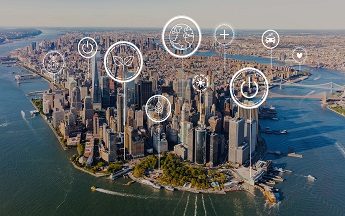Applying New Code Standards to Prior-Code Structures: Energy Code
By Austin Regan, R.A. and John Lashley
This article continues our series on prior-code buildings and types of changes that require compliance with current codes. This month, we’re focusing on the New York City Energy Conservation Code.
While Chapter C5 of the New York City Energy Conservation Code (NYCECC) offers detailed guidance on compliance for existing buildings, a building’s existing envelope and systems generally don’t require upgrading unless they’re being changed. That said, changing the use or occupancy of a building may trigger the need to upgrade existing systems.
Additions
When extending or increasing either the conditioned space floor area or the building height, these additions must comply with the current NYCECC requirements for new construction. The unaltered portions of the existing building or building system don’t require upgrading. Naturally, additions cannot create unsafe conditions or overload the current building systems.
Additions are considered compliant if the addition alone complies with the NYCECC or if, together, the existing building and addition comply with the energy code as a single building. Additions must adhere to the requirements in Section C502.2, which includes:
- Vertical fenestration
- Skylight area
- Building mechanical systems
- Service water-heating systems
- Pools and permanently installed, inground spas
- Lighting power and systems
- Interior lighting power
- Exterior lighting power
Alterations
Like additions, alterations to buildings need to comply with the current NYCECC requirements for new construction, without triggering upgrades for the unaltered portions of the building or its systems. (Here we insert the standard caveat that alterations can neither create hazardous conditions nor overload the current building systems.)
The following alterations, however, do not invoke compliance with new construction compliance, as long as they do not increase the building’s energy usage:
- Installation of storm windows over existing fenestration
- Installation of surface-applied window film on existing single-pane window assemblies to reduce solar heat gain, provided the code does not call for replacement of glazing or fenestration
- Exposure of existing ceiling, wall, or floor cavities during construction, if such spaces are then filled with insulation
- Construction that does not expose the existing roof, wall, or floor cavity
- Roof recover (installing an additional roof covering over a prepared existing roof covering without removing the existing roof covering)
- Alterations that replace less than 20% of a space’s luminaires, if the alterations do not increase the installed interior lighting power
In addition, air barriers will not be required for recovering or replacing the roof if the building alterations or renovations leave the rest of the building envelope intact.
Altering any non-conditioned or low-energy space to become conditioned space does require the newly conditioned space to comply with the current NYCECC, with regard to the following:
- Building envelope
- Roof replacement
- Vertical fenestration
- Skylight area
- Heating and cooling systems
- Economizers
- Service hot water systems
- Lighting systems (unless the alterations replace less than 20% of the luminaires and don’t increase the installed interior lighting power)
Repairs
Buildings and structures, in part or in whole, must comply with Section C501.3 of the NYCECC. In addition, work on non-damaged components that is required to repair damaged components will be considered part of the repair and not subject to the requirements for alterations. Routine maintenance—ordinary repairs that don’t require permits—are exempt from NYCECC requirements for repairs.
Change of Use or Occupancy
If the use of a space changes from one use to another, per Table C405.4.2(1) or Table C405.4.2(2) in the NYCECC, the installed lighting wattage must comply with the requirements in Section C405.4. For spaces undergoing a change in occupancy, if the change would increase the demand for either fossil fuel or electrical energy, then the space would need to meet the current NYCECC requirements.
If you have questions about how these requirements affect your specific property, please contact Metropolis Group at 212.233.6344.


